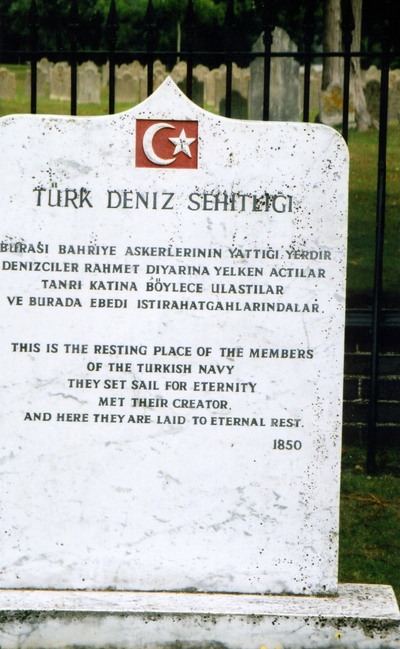Not far from the RN Hospital Haslar in Gosport lies the very large Clayhall Road Cemetery. It extends over 17 acres. From 1733, when Haslar Hospital opened, until 1859 naval personnel who died there were buried in the hospital grounds but space eventually ran out and the new cemetery was opened in Clayhall Road half a mile away.
Today some 5,000 graves can be seen there including 763 from World War One and 611 from World War Two all of naval personnel. Many interesting memorials, relating to naval disasters can also be seen there. One commemorates the loss of the sailing training ship Eurydice which sunk in a snow storm off Ventnor in March 1878 whilst returning home from Bermuda. Caught in a sudden squall and snow storm the ship capsized and sank close to the shore. Only two men survived out of a crew of 315. Another memorial commemorates the loss of the submarine L55, sunk in the Baltic in 1919 whilst attacking Bolshevik destroyers laying mines off Petrograd. The 42 crew members all perished but their bodies were eventually recovered by the Russian Navy in 1928 and brought back to Gosport for burial.
Not far away a small enclosed cemetery with the Turkish flag flying proudly above it can be found. It all relates back to November 1850 when two Turkish frigates arrived in Portsmouth on a courtesy visit and to undergo training with the Royal Navy. They were the 44 gun Mirat-y-Zufer and the 64 gun Sirag-I Bathoy with a combined crew of 460 men. Some 26 died in the following months in Haslar hospital. One or two were killed in training accidents but most succumbed to cholera or consumption.
Their graves were forgotten and neglected for over a century but in 1988 white marble headstones name all the dead men and a boundary wall and railings enclosed the whole site. Costs were shared by the Ministry of Defence and the Turkish Navy. The President of Turkey attended the opening ceremony. Every year since then a commemorative service is held on April 4 attended by the Turkish Ambassador and naval representatives.
A notice board, in Turkish and English, bears the following inscription:
‘They set sail for eternity, met their Creator and here are laid to eternal rest’.
Each grave is simply inscribed with the name of the sailor, his ship and date of death. One I photographed read:
L R MEHMET.
Siragi-i-Bahri Gemisinden. 28 Nuan 1850.
It is nice to know that these unfortunate sailors have not been forgotten. Ironically when the Crimean War broke out in 1854, hundreds of British soldiers and seamen died in Scutari Hospital near Constantinople of Florence Nightingale fame. Not far away the Haidar Pasha Commonwealth War Graves cemetery contains a memorial to some 6,000 Crimean servicemen who mostly lie in unmarked graves.
John Symonds





